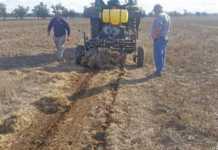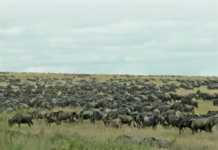Let me begin by stating the obvious. The ever-increasing cost of production has landed farmers in a deep hole. It’s dark down there and the oxygen is fast running out. There’s a way out – in fact there are several – but farmers are too busy bemoaning their ‘inevitable fate’ to realise this.
It seems to me they’re waiting for some kind of miracle to free them from the high-production-cost, low-return trap. All the same, let’s look at one way out – and ask ourselves how we can reduce input costs while increasing output. Impossible? Yes, most definitely – for those who think it’s impossible!
An open mind
My advice to those with an open mind is to start by examining your main input costs to see if there’s any feasible way these can be reduced. And the emphasis is on ‘feasible’. For example, it’s a waste of time trying to cut down on minor day-to-day expenses.
Focus instead on the really big costs – such as nitrogen fertiliser.
You can get your own nitrogen production plant up and running within one season. Many farmers have already done so. Let me tell you about one. To protect him from being trampled to death by thousands of near-bankrupt farmers, I’ll call him ‘Luke’ and tell you only that he farms in Free (nitrogen) State.
The best way to show how he has saved on nitrogen costs is to compare his nitrogen use in 1990 with that of 2011. Luke calculates that he’s saving more than R600 000/year by producing his own nitrogen.
Inexpensive
Erecting a nitrogen production plant is really inexpensive. You don’t need a building or a shed; neither do you need to buy expensive equipment. You won’t even have to increase your staff complement. You just can’t get much better than this, can you? But it won’t happen unless you get your act together.
What you need is a clear head and an ability to do things right. You’ll be working with living organisms that require a lot of TLC. But it’s more than worth it – your future welfare depends upon it! The first thing is to fire your fertiliser rep – the one whose main aim is to fill his pockets at your expense.
Replace him with one who’s first consideration is your welfare. He must know how to grow legumes and encourage you to do so. Get him to walk with you through the transformation from chemical to biological farming which will enable you to produce virtually all the nitrogen you need.
I’m reminded of a farmer’s day about 30 years ago, at which I spoke on legume-based pastures that need little or no nitrogen. The first person to challenge me was a senior agronomist from a leading fertiliser company, who seemed to suggest that I was a fool for not realising that legumes don’t grow in this part of the world.
And so fertiliser companies hold many farmers captive as buyers of their nitrogen. Fortunately, some farmers have broken free. It is only a matter of time before most of the milk in this country will be produced off high quality, low cost, legume-based pastures.
John Fair is a leading expert on pastures and founder and head of the SA Biofarm Institute in Harrismith.
Contact John at [email protected]. Please state ‘Biological farming’ in the subject line of your email. Tel: 058 622 3585.













